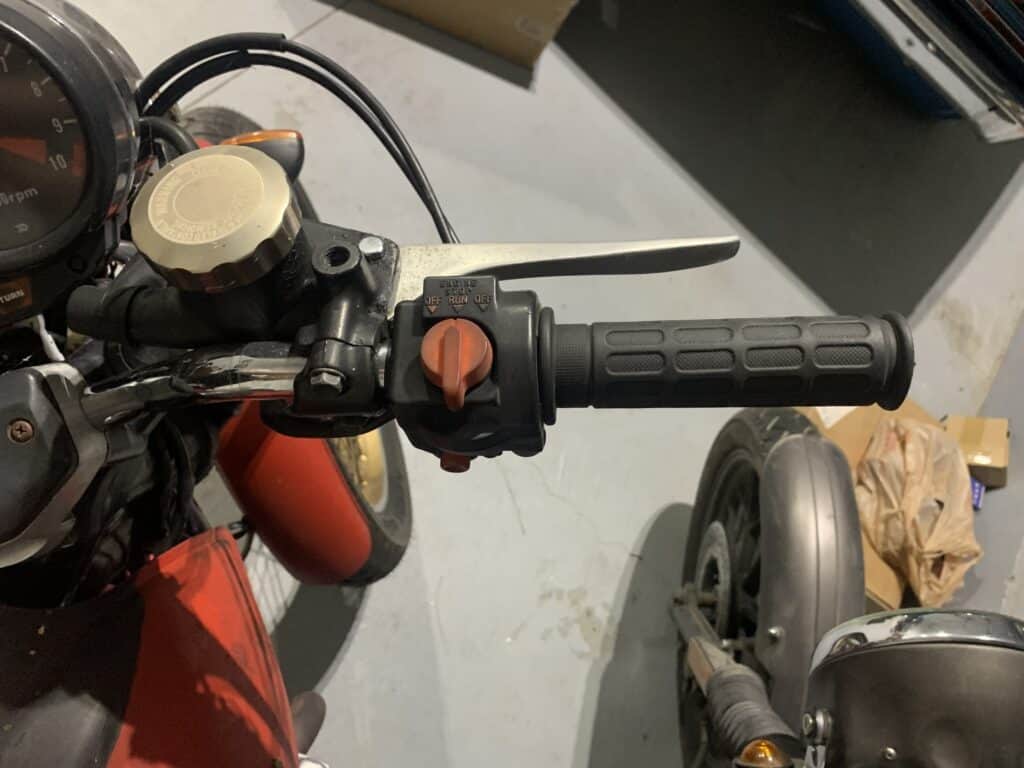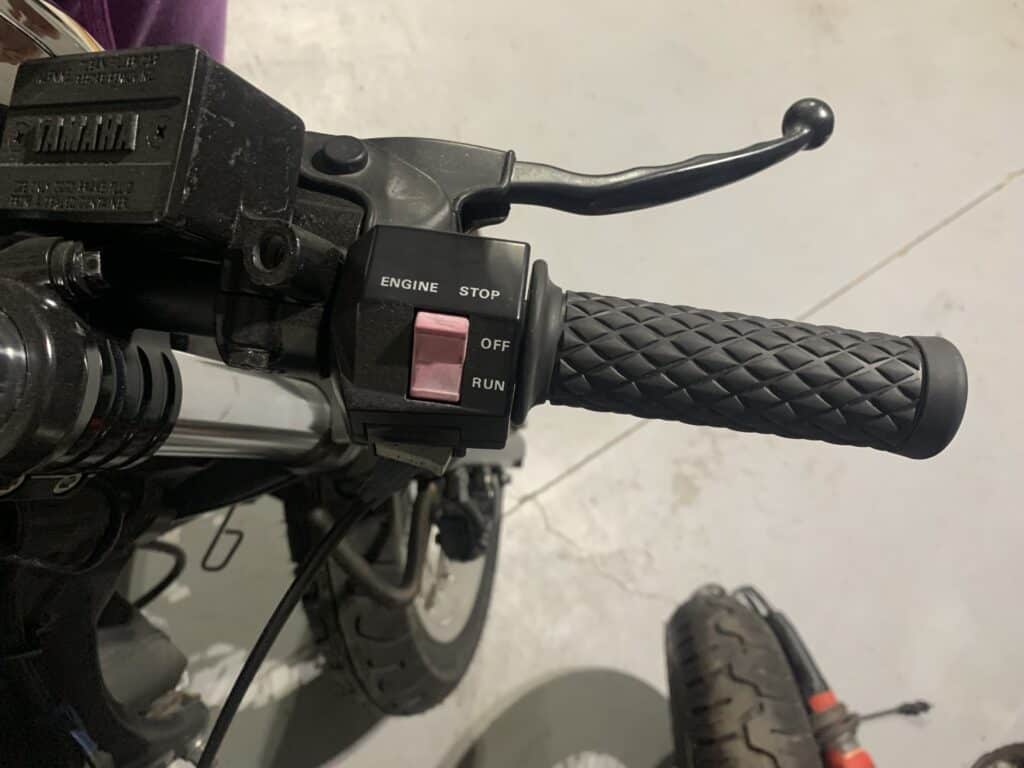
As you may have noticed, motorcycles have a number of buttons and switches around the handlebars and on the instrument cluster. Some motorcycles will have more than others depending on how new it is.
One particular switch, the kill switch, sometimes poses a mystery to motorcyclists. A lot of them wonder why a motorcycle has one in the first place and may question how it works.
Why do motorcycles have a kill switch? A motorcycle has a kill switch because it lets a motorcyclist turn off the motorcycle without needing to take a hand off the handlebars since the button is within reach of the thumb. This is a safety feature that lets the motorcyclist turn off the engine quickly in the case of an emergency.
Being an avid motorcyclist myself, I’ve needed to use the kill switch several times on my motorcycles in the past 10 years while riding. I can give you an easy breakdown of why these switches exist, when it should be used, and some pointers that will help any motorcyclist who plans on using these switches.
Purpose Of A Kill Switch
You’ve probably noticed that big red button or switch on the right hand side of your handlebars on your motorcycle and it can seem a little intimidating. Any button that’s red will likely have an impact on the machine’s functionality. But there’s a logical reason why a motorcycle has a button/switch like this.
This button, known as the kill switch, is a mechanism that almost all motorcycles have. The name of it explains exactly what it does: kills, or immediately turns off, the motorcycle. It takes both hands to operate a motorcycle properly and the kill switch helps with keeping the rider safe. The kill switch is in reach of the right thumb (almost always) which makes it easy to turn off the motorcycle instead of having to take one of your hands off the bike to turn the key off.
Engineers designed motorcycles this way on purpose; if you have to take one hand off the handlebars to turn the key off, it’s possible to slip the clutch and risk jolting forward unexpectedly. A kill switch helps you stay in total control of your motorcycle.
There are times when a kill switch comes in handy in emergency situations. Perhaps a rider encounters a dangerous scenario on the road and needs to immediately turn off their engine. Maybe the motorcycle tipped over on their foot or leg while it was still on, so a quick push on the kill switch turns off the engine immediately to prevent further damage or injury.
One specific scenario that happened to me was while I had my 1980 CB750 idling in the garage while I was prepping it for a ride. The throttle became stuck and was at an extremely high RPM and I couldn’t get it to move back. I immediately engaged the kill switch to turn it off.
There are a slew of scenarios where a kill switch on a motorcycle will be needed, and if you’re a motorcyclist yourself and haven’t encountered a scenario yet, you probably will soon.
How Does A Kill Switch Work?

A good part of understanding why a motorcycle has a kill switch is understanding how it works. It’s there for a reason, but it’s possible for it to be abused and ruin some parts of the motorcycle when it isn’t used right.
A kill switch is wired to the ignition coil (the part of the motorcycle that tells the spark plugs to spark). When kill switch is enabled, it breaks the ground circuit in the ignition coil so that the coil no longer has a positive and a ground. This ensures the ignition coil is no longer firing and delivering a spark to the spark plug. When an engine doesn’t have a spark, it can no longer run which ultimately makes the engine turn off.
Kill switches come in different forms, usually either a button or a flip switch that can look similar to a light switch. The button form (which is more common among newer motorcycles) requires the rider to hold it down for a few seconds because engineers realize it’s possible to accidentally push the button while out for a ride.
The switch kind is made to be accident-proof, meaning you need to put in some effort to flip it.
Is It Bad For The Motorcycle To Use The Kill Switch?
From an outsider’s perspective, it may seem like it isn’t good for the motorcycle to use the kill switch very often. Suddenly cutting off power to the engine sounds like bad practice.
In actuality, using the kill switch on the motorcycle isn’t bad for the motorcycle at all. It’s like unplugging an electronic from the wall outlet. There aren’t any repercussions the engine suffers by suddenly withdrawing the spark it needs to continue to run. In addition, there isn’t a point where you can use the kill switch too much on a motorcycle.
However, there are situations where you can cause damage to the motorcycle from the kill switch if you’re not using it properly. Such situations may include pushing the button over and over again even when the motorcycle is already off, like pushing it 10+ times within a few seconds. This won’t cause immediate damage, but if done habitually over time it could ruin the ignition coil.
A Few Things To Remember
If your motorcycle has a kill switch, there are a few things to remember for the future to prevent frustration. If you have a switch that goes from on to off (instead of a spring switch or button), make sure it’s turned back to “on” before you go to start your motorcycle again. Otherwise, you’ll push your starter and nothing will happen. A lot of people forget to check this and wonder why their motorcycle isn’t starting, usually resorting to thinking it’s a battery issue.
Also note that the terminology of a kill switch varies between manufacturers and motorcycle riders. A kill switch may also be known as a “stop switch” or an “emergency stop.” Don’t let the term “emergency stop” alarm you because it still serves the same function on most motorcycles.
Remember to only place your thumb over the kill switch if you intend to immediately use it. Though they’re placed and designed to make it hard to accidentally hit, it’s always a good practice to simply wrap your thumb around the handle bar until you’re ready to use the switch. Some riders have a habit of riding with their thumb out and end up accidentally hitting the button while riding.
Conclusion
The kill switch is a critical safety feature found on motorcycles that serves multiple purposes. Its primary function is to provide riders with a quick and easy way to shut off the engine in emergency situations, helping to prevent accidents and mitigate potential harm. This feature can also be used to normally turn off your motorcycle when you’re done riding and essentially can’t be used “too much.”
Having used this feature many times on my bikes, I know first-hand how important and convenient this switch is. Have you guys ever had weird situations where you had to use your kill switch? How did it turn out?
